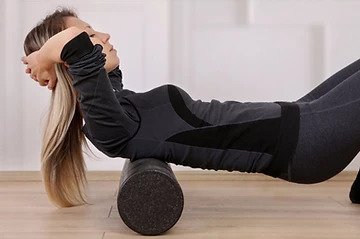Exercise as Therapy – Workshop

As a personal trainer and a coach, I am continuing to learn and build on my skills, better enabling me to support my clients, as part of my ongoing development, it is important to be able to work with a range of clients including those that may have pre-existing muscular skeletal conditions. These could range from frozen shoulder to plantar fasciitis to tennis elbow, snapping hip syndrome, hernias, piriformis syndrome, bursitis, ITB syndrome, muscle sprain, strain and tears.
On 29th February and 1st March I attended a two-day course to learn about exercise as therapy and how to work with clients that either self-refer to are referred to me by a physio, with a specific condition. The purpose of this therapy is to enable me to then work with the client over several weeks or months to alleviate the symptoms and maximise their range of movement, so that they can go about their daily life as much as possible.
As a practitioner of exercise as therapy, the aim of working with the client is to be able to identify and then reduce their actions which cause extra inflammation to the troubled area. We then focus on movements or stretches to lengthen shortened muscles and work on moves that strengthen weak or inhibited muscles. Alongside this practice and in between sessions we encourage clients to try to reduce the inflammation through rest, ice, compression and elevation (where possible).
There are various progressions we work through over a number of sessions with our clients in appointments to treat the affected area, as outlined below:
- Each session would start with a warm up, keeping range of motion small to start with focusing, on moving the body around the affected area with a great deal of focus on technique so as not to give the body a chance to compensate.

- Moving on to releasing tightness through pressure point release helps to mobilise the area, this can be done through foam rolling and using various types of trigger point balls.
- Once this has been completed, we would move on to movements that help to stretch the tight and shortened muscles. Movements like a cat stretch are completed with focus on moving with breath, like we do in Pilates.

After a few sessions and once the area has been mobilised to allow for better movement, we would look at exercises that creates stability around the affected area. If, for example the client had an issue in their hip joint, we would do exercises here that help to stabilise the hips like the deep core muscles and the glutes. By stabilising the joint through a stronger surrounding area, we are reducing the likely hood of additional inflammation and pain.
The clam is an excellent exercise to stabilise the hips.
Once mobility and stability have been achieved, we could start to add some stronger moves into the session, we might even start to add extra load (weights). For example, we could incorporate a bodyweight exercise like a squat if it was appropriate. Working through all of these stages will help the client on their journey of recovery from their problem or movement restriction.
Many of the movements that are used in the stages mentioned above are completed using Pilates principles of breathing, control, core (cantering), concentration, flowing and precise movements. I can absolutely see why we do these moves this way when we are using exercise as therapy.
It is so important to be able to help my clients with some of the common complaints that they might experience, and I really enjoyed learning more about the body and the incredible things it is capable of.
If you know of anyone or if you are suffering with issues that have been diagnosed and would like some help reducing the pain and restriction then please get in touch for a free consultation chat.
Sara – Revolutions.fit

[…] Having extra anatomy knowledge and knowing how to rehab diagnosed injuries really helps me feel confident that when a client is struggling, I can adapt their training as needed. You can read more about my additional training in this blog post Exercise as Therapy – Workshop – Revolutions Fit […]